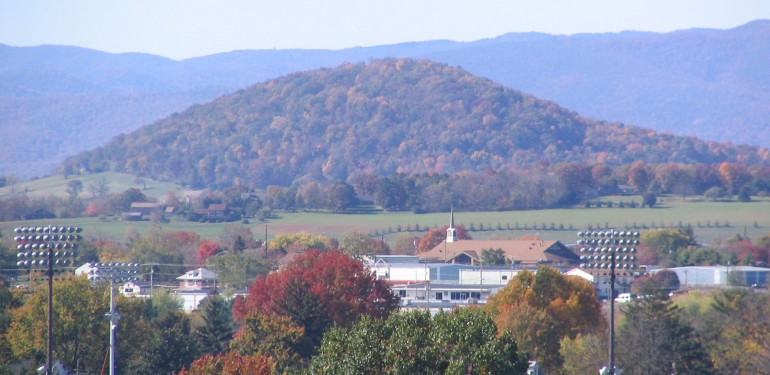By John Faulders
We have heard about recent eruptions of volcanoes throughout the world. Mt. Kilauea, on the big island of Hawaii, has been erupting since 1983. Lava flows have destroyed many houses. Recently, Mt. Eyjafjallajokull in Iceland erupted and the ash cloud drifted over England and shut down Heathrow Airport for a few days. Mt. Etna in Sicily continues to erupt on a regular basis and sometimes destroys property and affects air travel out of nearby Catania. Can volcanoes in Virginia wreak similar havoc? Maybe they could have – millions of years ago.
Volcanoes usually form near tectonic plate boundaries and are formed as a result of the tectonic plates either bumping together or pulling apart. Most volcanoes are found in the Pacific “Ring of Fire.” A few volcanoes, however, form from “hot spots.” The Hawaiian Islands, the Yellowstone caldera and the volcanoes in Iceland are examples of hot spot volcanoes.
In Virginia, the volcanoes of Trimble Knob and Mole Hill are the eroded remnants of extinct volcanoes. But since their location is not on a tectonic plate, scientists theorize that their existence occurred as a result of a fracture in the mantle similar to a hot spot. Trimble Knob is in Highland County and Mole Hill is in Rockingham County. Trimble Knob is 3123 feet above sea level but it only stands 229 feet higher than nearby Monterey, Virginia. Mole Hill is 1895 feet above sea level but only stands roughly 150 feet above nearby Harrisonburg, Virginia. Trimble Knob and Mole Hill are two of the youngest volcanoes on the east coast of North America. Trimble Knob is roughly 35 million years old while Mole Hill is about 47 million years old.
Scientists know Trimble Knob and Mole Hill are volcanic hills because they are made of igneous, primarily basalt rock, while most of the Shenandoah Valley is composed of sedimentary rocks. Trimble Knob and Mole Hill stand taller than surrounding areas today because the igneous rock has weathered much less than the surrounding sedimentary rock.
Trimble Knob and Mole Hill are on private property so they are not easily accessible. Gerald Knicely bought 46 acres of Mole Hill in 2010. He’s arranged to have the land he bought protected through a conservation easement with the Virginia Outdoors Federation. If you go to Mole Hill, Mr. Knicely will let most people visit if they sign a liability waiver.
So, because Virginia’s volcanic history is long past, you don’t have to worry about your house or flight delays in Virginia – it is unlikely lava flows or volcanic ash will affect you.
About the Author: John Faulders is a student at George Mason University enrolled in the Mason LIFE program.




